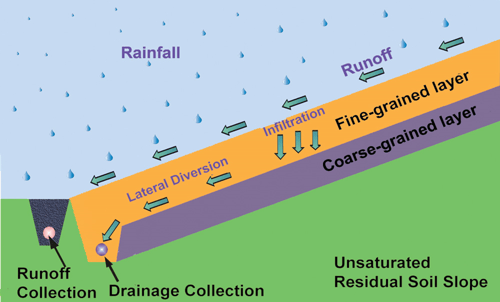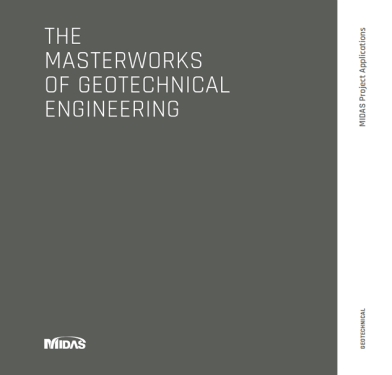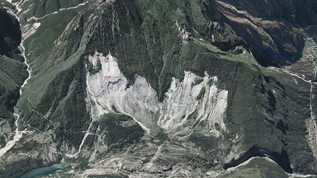Adaption measures for rainfall-induced slope failures
based on unsaturated soil mechanics (Part 1)
👇 Watch the popular case study webinar
Unsaturated Slope Stability Analysis using GTS NX
1. Failures of unsaturated soil slopes
Slope failures have become one of the most frequent natural hazards all over the world. In particular, rainfall-induced slope failure is a common problem in many tropical areas that are covered by residual soils. Furthermore, the rapid growth of regional economies has resulted in a tremendous demand for hillside developments involving engineered and fill slopes. Rainfall-induced slope failures can pose a potential danger to infrastructures and public safety (Rahardjo et al., 2019).
Steep residual soil slopes are generally characterized by a deep groundwater table and a significant thickness of unsaturated soil above the water table. The negative pore-water pressure (matric suction) above the water table provides additional shear strength to the unsaturated soil. The unsaturated soil zone is also influenced by the ground surface moisture flux boundary condition changes (i.e., infiltration, evaporation, and transpiration). As rainwater infiltrates into the slope, the matric suction in the soil decreases and as a result, the apparent shear strength associated with matric suction can decrease, causing the slope to become susceptible to failure.
The factors which influence slope instability include the geology, topography of the area, soil types, soil properties, local climates (rainfall and evaporation), and water flow patterns within the slope. Generally, the effect of rainfall in inducing slope failures is attributed to the loss of matric suction as the wetting front advances from the ground surface or to the rise in the groundwater table within the slope. It is also possible that both processes that occur simultaneously (Kim et al., 2018).
Natural residual soil slopes have heterogeneous characteristics. Permeability and shear strength vary gradually with depth, controlling both local seepage response to rainfall infiltration and the location of the shear surface (Rahardjo et al., 2012). The excessive rainfalls affect the flux boundary condition (i.e. infiltration, evaporation, and transpiration) across the ground surface, and subsequently, increase the possibility of the occurrence of rainfall-induced slope failures. Slope failures occur more frequently during or after rainfall. Some major failures could generate a large amount of debris and caused severe damages to public facilities, roads, and buildings. Previous studies indicated that the higher intensity and more frequent rainfall could lead to a higher chance of slope failure (Kim and Jeong, 2017).
2. Concept of adaptation measures based on unsaturated soil mechanics
Picture 2. Construction of Capillary Barrier System
Singapore is located in a tropical region where heavy rainfalls and high temperatures are conducive for rapid in-situ chemical and mechanical weathering that result in deep residual soil profiles. Because of the climatic conditions and geological features, slope instabilities are common in this region. To protect slopes against the possibility of rainfall-induced slope failures, preventive measures are necessary to ensure the safety of nearby buildings or public facilities.
2.1 Vegetation
Conventional slope protection systems sometimes can be costly, difficult to construct, and may not fit in with the site aesthetics. The use of vegetation or green technology is an alternative technique that combines living biological elements and engineering design methods to improve slope stability and erosion control (Montgomery et al., 2000; Norris and Greenwood, 2000; Satyanaga and Rahardjo 2019). Chok et al. (2004) incorporated vegetation-dependent parameters, apparent root cohesion (cR), and depth of root zone (hR), into their finite element slope stability analysis.
The results show that vegetation plays an important role in stabilizing shallow-seated slope failure, and significantly affects stability. Tsukamoto (1990) studied the effect of tree roots on debris slides for steep forested slopes of Japan and concluded that the effect of vertical roots is to push down a potential sliding plane to the lower and harder soil profile. Schwarz et al. (2010) studied the effect of vegetation on slope stability by incorporating lateral root reinforcement in slope stability analysis. They found that lateral root reinforcement can strongly influence the stability of slopes up to a certain area (1000–2000m2). The magnitude of this stabilizing effect depends on parameters such as inclination, soil mechanical properties, and root distribution.
Mafian et al. (2009) studied the effects of roots on soil strength and suction. They found that root reinforcement can be used as a bio-engineering solution for slope stability. Satyanaga and Rahardjo (2019) studied the unsaturated properties of soil consisting of mangrove roots and their effects on the stability of an Old Alluvium soil slope during rainfall. Their numerical analyses indicated that that the slope without M. malabathricum experienced significant decreases in the factor of safety during rainfall than the slope covered with M. malabathricum.
2.2 Horizontal drains
Horizontal drains for lowering groundwater levels are recognized as the most economical method available. Horizontal drains for the stabilization of slopes have been used extensively around the world, such as in Australia (Snowy Mountains Hydro-Electric Authority, 1983), Austria (Veder and Lackner, 1985), Brazil (Costa Nunes, 1985), France (Cartier and Virollet, 1980), Great Britain (Hutchinson, 1977), United Sates (Smith, 1980), and Hong Kong (McNicholl et al., 1986).
Many researchers studied the effectiveness of horizontal drains in improving the stability of slope by modeling the horizontal drain using finite element analyses. Two-dimensional finite element modeling of horizontal drains has been conducted by Rahardjo et al. (2003), and Rahardjo et al. (2011).
2.3 Capillary barrier system
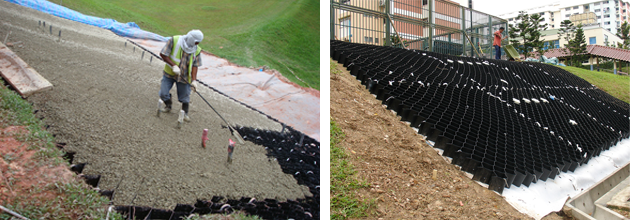
Picture 2. Construction of Capillary Barrier System
A capillary barrier system is constructed on the surface of a slope in order to minimize rainfall infiltration into the slope. A capillary barrier is an earthen cover system using a fine-grained layer of soil overlying a coarse-grained layer of soil (Satyanaga et al. 2019; Harnas et al. 2016; Rahardjo et al. 2016). Previous research works have indicated the effectiveness of the capillary barrier system as a soil cover in reducing rainfall infiltration (Tami et al. 2004; Khire et al. 2000). In the case of a slope with a high groundwater table and is prone to rainfall-induced slope failure problems, a capillary barrier system can be installed together with horizontal drains. The capillary barrier has been developed as slope protection to minimize rainwater infiltration into residual soil slopes in Singapore by Rahardjo et al (2007).
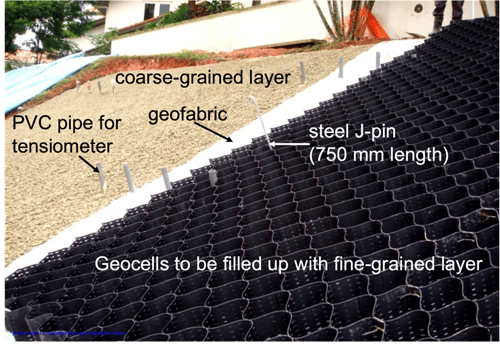 Picture 3. Laying of Separator Layer and Top Geocells
Picture 3. Laying of Separator Layer and Top Geocells
The capillary barrier system utilizes the contrast in hydraulic properties of fine- and coarse-grained layers in unsaturated conditions to limit water percolation into the underlying soil layers (Tami et al., 2004; Rahardjo et al., 2016). The Zhan et al. (2014) study indicated that an inclined three-layer cover with capillary barrier effect (CCBE) comprising silt, sand, and gravel performed well in protecting a slope in Southern China under a humid climate and high intensity and long duration of rainfalls. Field monitoring (Rahardjo et al., 2017) proved that the capillary barrier system was effective to minimize rainwater infiltration as well as maintain the stability of the slope up to about 35 inclination angles.
However, the creation of new space is a growing concern in Singapore which leads to steepening slopes or cutting back slopes. The construction of a slope steeper than 35 requires consideration of a retaining structure. Thus, a retaining structure that incorporates a capillary barrier system is needed to mitigate rainfall-induced failures in steep slopes of tropical regions such as Singapore.
2.4 Geobarrier system
Based on the problems stated in the preceding discussion, Rahardjo et al (2015) developed the Geobarrier System (GBS), a retaining structure that incorporates a capillary barrier system. The system consists of geobags that are made from geosynthetics and are filled with soils or granular materials (Matsuoka et al. 2001). In line with current sustainable environment policies, recycled materials such as recycled concrete aggregate (RCA) and reclaimed asphalt pavement (RAP) can be used to replace natural aggregates as components of the capillary barrier system (Rahardjo et al. 2013; McCulloch et al. 2017). .png?width=800&name=Construction-of-GeoBarrier-System-for-Residual-Soil-Slope-at-Orchard-Boulevard(1-1).png)
.png?width=800&name=Construction-of-GeoBarrier-System-for-Residual-Soil-Slope-at-Orchard-Boulevard(2-1).png)
Picture 4. Construction of GeoBarrier System for Residual Soil Slope at Orchard Boulevard
In this case, the bags filled with fine-grained recycled materials (fine RCA or RAP) are placed on top of a layer of coarse-grained recycled materials (coarse RCA or RAP) as the components of a capillary barrier system. Rahardjo et al. (2018) showed that the presence of bags between the fine- and coarse-grained materials did not interfere with the effectiveness of the capillary barrier system. Approved soil mixture (ASM) was also contained in bags and placed in front of the fine-grained layer to facilitate the planting of deep and widespread rooted shrubs/trees as part of the wall facing.
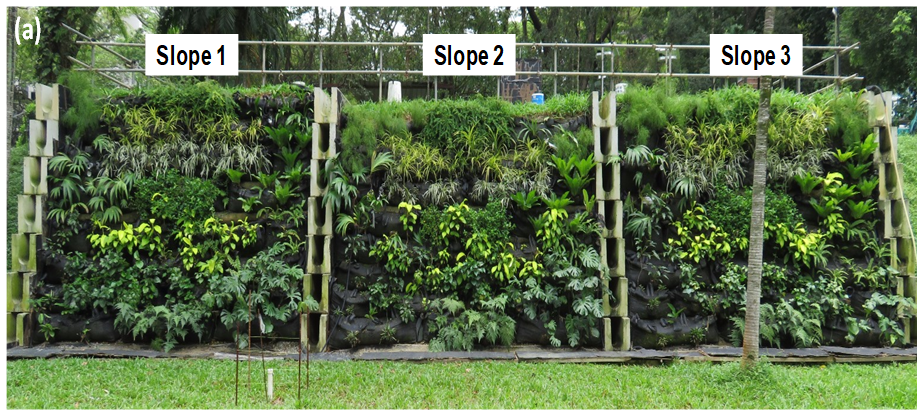
Picture 5. Completion of Geobarrier System Construction
3. Notes
Threats to the environment due to slope failures may create a risk that affects environmental sustainability. The cost of repairing slopes is more expensive than the cost of preventive measures. Therefore, engineers must have a good understanding of the mechanism leading to rainfall-induced slope failures enabling suitable actions to be taken to prevent slopes from failures.
👇 Read part 2 : Part2 : Possible adaptation measures related to policy in Singapore

References
Cartier, G., Virollet, M., (1980). Note technique relative à la surveillance et à l’entretien d’un dispositive de drainage par drains subhorizontaux, Laborataire des Ponts et Chaussées, France, Note Technique, p14.
Chok, Y. H., Kaggwa, W., Jaksa, M., B., Griffiths, D. V., (2004). Modelling the effects of vegetation on stability of slopes, Proc. 9th Australia-New Zealand Conference on Geomechanics, Auckland, New Zealand, pp. 391-397.
Harnas, F.R., H. Rahardjo., E.C. Leong, J.Y. Wang (2016) Physical Model for the Investigation of Capillary Barriers Performance Made Using Recycled Asphalt, Geotechnical Testing Journal, 39, 6, 977-990.
Hutchinson, J.N., (1977). Assessment of the effectiveness of corrective measures in relation to geological conditions and types of slope movement. Theme 3: General Report. Bulletin A1G1, 16, 131-155.
Khire, M., Benson, C., and Bosscher, P. (2000). Capillary Barriers: Design Variables and Water Balance, Journal of Geotechnical and Geoenvirnmental Engineering, 126 (8), 695-708.
Kim, J., Hwang, W., Kim, Y., (2018). Effects of hysteresis on hydro-mechanical behavior of unsaturated soil, Engineering Geology 245, 1-9
Kim, Y., Jeong, S., (2017). Modeling of shallow landslides in an unsaturated soil slope using a coupled model, Geomechanics and Engineering 13 (2), 353-370
Mafian, S., Bujang B.K., Ghiasi, V. 2009. Evaluation on Root Theories and Root Strength Properties in Slope Stability, European Journal of Scientific Research, 30 (4), 594-607.
Matsuoka, H., Liu, S.H. and Yamaguchi, K. (2001). Mechanical Properties of Soilbags and Their Application to Earth Reinforcement, Proc. Int. Symp. Earth reinforcement, Fukuoka, Japan, 587-592.
McCulloch, T., Kang, D., Shamet, R., Lee, S.J. and Nam, B.H. (2017). Long-Term Performance of Recycled Concrete Aggregate for Subsurface Drainage, Journal of Performance of Constructed Facilities, 31 (4), 47-54.
McNicholl, D.P., Pump, W.L., Cho, G.W.F., (1986). Groundwater control in large scale slope excavations-five case histories from Hong Kong, Proc. the 21st regional conference of the Engineering Group of the Geological Society, Sheffield.
Montgomery, D.R., Schmidt, K.M., Dietrich, W.E., Greenberg H.M., (2000). Forest learing and regional landsliding in the Pacific Northwest, Geology. 28, 311-314.
Norris, J. E. Greenwood, J. R., (2000). In-situ Shear and Pull-out Testing to Demonstrate the Enhanced Shear Strength of Root Reinforced Soil, Proc. 8th International Symposium on Landslides, Cardiff, UK.
Rahardjo, H., Gofar, N. Harnas, F. and Satyanaga, A. (2018). Effect of Geobags on Water Flow through Capillary Barrier System. Geotechnical Engineering Journal of the SEAGS & AGSSEA, 49 (4).
Rahardjo, H., Hritzuk, K.J., Leong E.C., Rezaur, R.B., (2003). Effectiveness of Horizontal Drains for Slope Stability, Engineering Geology, 69 (3-4), 295-308.
Rahardjo, H., Kim, Y., Satyanaga, A., (2019). Role of unsaturated soil mechanics in geotechnical engineering, International Journal of Geo-Engineering 10 (1), 1-23
Rahardjo, H., Krisdani, H., Leong, E.C. Ng, Y.S., Foo, M.D. and Wang, C.L. (2007). Capillary Barrier as Slope Cover, Proc. 10th Australia New Zealand Conf. on Geomechanics, Brisbane, Australia, 698-703.
Rahardjo, H., S. Krisnanto, and E.C. Leong (2016) Effectiveness of Capillary Barrier and Vegetative Slope Covers in Maintaining Soil Suction, Soils and Rocks Journal, Special topic on Theory and Practice of Unsaturated Soils Mechanics, 39 (1), 51-69
Rahardjo, H., Santoso, V.A. Leong, E.C. Ng, Y.S. Tam C.P.H. and Satyanaga, A. (2013). Use of Recycled Crushed Concrete and Secudrain in Capillary Barrier for Slope Stabilization, Canadian Geotechnical Journal, 50, 1-12.
Rahardjo, H., Santoso, V.A., Leong, E.C., Ng Y.S., Hua, C.J., (2011). Performance of Horizontal Drains in Residual Soil Slope, Soils and Foundations, 51 (3), 437-447.
Rahardjo, H., Satyanaga, A. Leong, E.C., (2012). Unsaturated Soil Mechanics for Slope Stabilization. Geotechnical Engineering Journal of the SEAGS & AGSSEA, 43 (1), 48-58.
Rahardjo, H., Zhai, Q., Satyanaga, A., Leong, E.C., Wang, C.L., and Wong, L.H. (2015). Geo-Barrier System as a retaining structure, Proc. 6th AP-UNSAT2015 Conf., Guilin, PR China., 871-876.
Satyanaga, A., Rahardjo, H., (2019). Stability of unsaturated soil slopes covered with Melastoma malabathricum in Singapore. Geotechnical Engineering, Online published.
Satyanaga, A., Rahardjo, H., Hua, C.J. (2019). Numerical simulation of capillary barrier system under rainfall infiltration, ISSMGE International Journal of Geoengineering Case Histories. 5 (1), 43-54.
Schwarz, M., Pretic, F., Giadrossichc, F., Lehmann, P., Orb, D., (2010). Quantifying the role of vegetation in slope stability: A case study in Tuscany (Italy), Ecological Engineering, 36 (3), 285-291.
Smith, D.D., (1980). Long-term performance of horizontal drains, Transportation Research Record, 783, 39-45.
Snowy Mountains Hydro-Electric Authority. 1983. Written communication with GCO.
Tami, D., H. Rahardjo and E.C. Leong. (2007). Characteristics of Scanning Curves of Two Soils. Soils and Foundations, 47 (1), 97-109.
Tsukamoto, T., (1990). Effect of vegetation on debris slide occurrences on steep forested slopes in Japan Islands, Proc. the Fiji Symposium, IAHSAISH, No.192.
Veder, C., Lackner, K., (1985). Stabilizing a structure through drainage by means of horizontal borings, Proc. the 11th International Conference on Soil Mechanics and Foundation Engineering, San Francisco.
Zhan, TLT, Li, H, Jia, GW, Chen, YM and Fredlund, DG (2014). Physical and numerical study of lateral diversion by three layer inclined capillary barrier covers under humid climatic conditions, Canadian Geotechnical Journal, 51 (12), 1438-1448.
